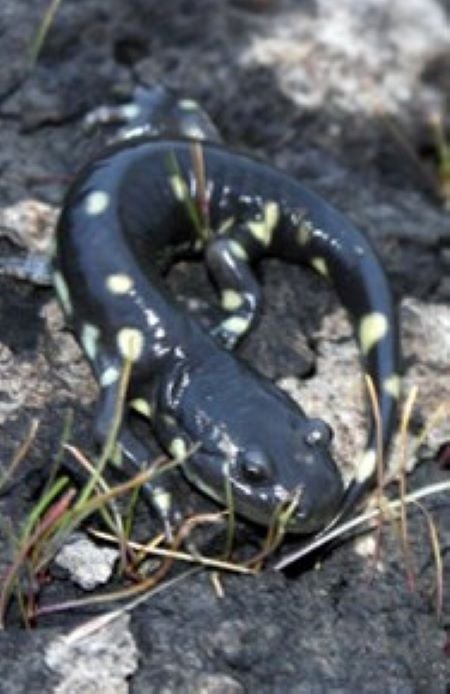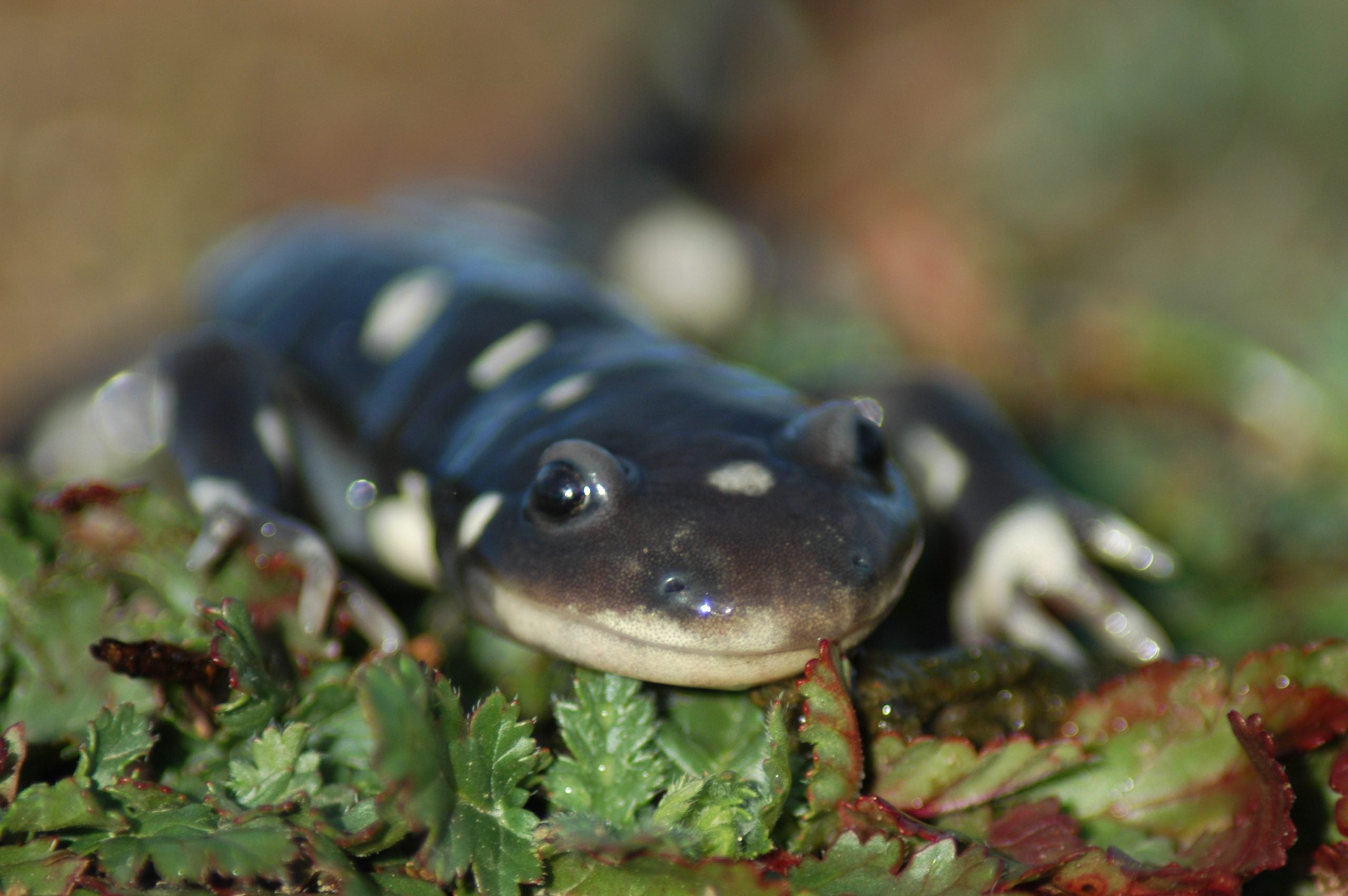
General Information: Mostly black with bright yellow spots and a wide-set mouth, the California tiger salamander looks like it is grinning. It is found only in California, primarily in grasslands and low foothill regions. It lays eggs and spends the first ten weeks of its lifespan in aquatic environments, including vernal pools and other temporary ponds, migrating to terrestrial habitat in search of underground burrows.
Category: Focal species
Surface Water Needs: Ponds and riparian environments
Federal Listing Status: Threatened
State Listing Status: Threatened
Potential Conservation Actions:
- Management plans for wetlands and ponds
- Grazing plans
- Limit distance between riparian environments and upland areas
Fun Fact
California tiger salamanders can lay up to 1,300 eggs at a time.
Habitat
California tiger salamander divides its life between water and land. It relies on long-lasting temporary pools, like vernal pools, to breed, lay eggs, and develop during the larval stage. Restoration and management of vernal pools and other temporary pools do not require imported water. Terrestrial habitat must be near aquatic breeding sites and consists of burrowing sites, such as gopher burrows or man-made piles of lumber.

Vernal pools

Ponds and wetlands

Grasslands

Oak woodlands
Disturbance and Stressors
Habitat loss, degradation, and fragmentation; housing development; agricultural cultivation; nonnative species introductions; and infectious diseases contributed to the decline in California tiger salamanders. Excessive droughts may impact California tiger salamander breeding success.

Habitat fragmentation

Housing development

Agriculture

Invasive predators

Sources: Barry and Shaffer 1994; Feaver 1971; Holland et al. 1990; Loredo et al. 1996; Thomson et al. 2016; Trenham and Shaffer 2001; U.S. Fish and Wildlife Services, 2014, 2017, and 2020
Photo credits: Standford University; Elkhorn Slough Foundation